#vsevolod ivanov
Explore tagged Tumblr posts
Text
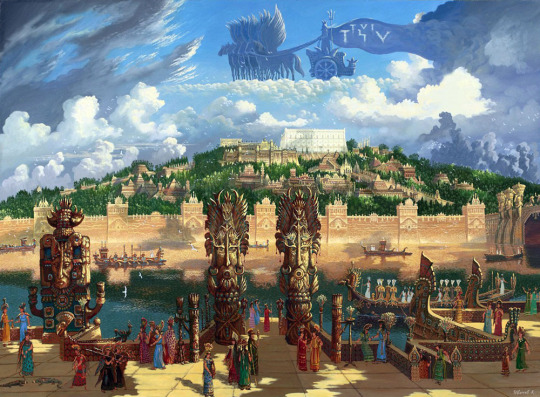


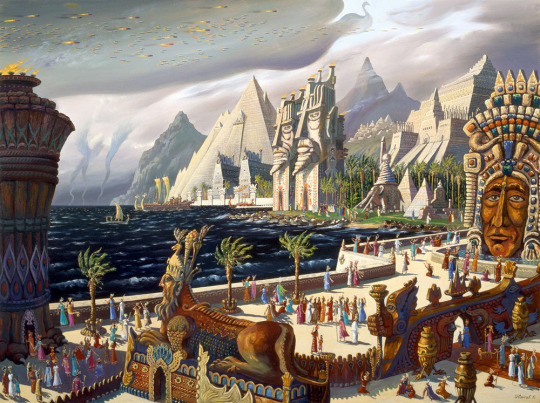
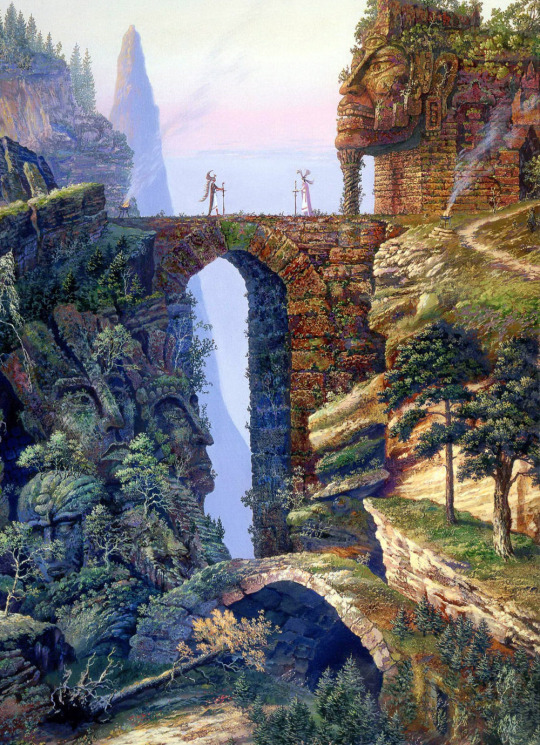
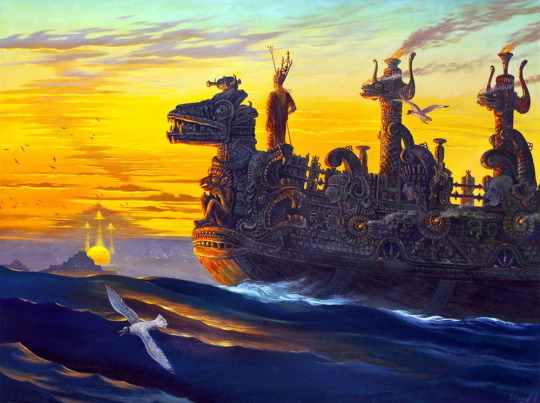

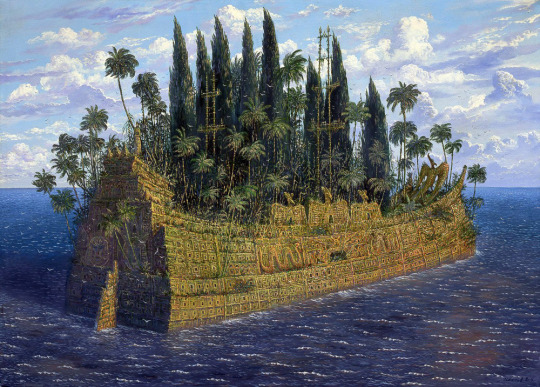

Vsevolod Ivanov, Visions of Atlantis, 2006-2012
111 notes
·
View notes
Text

The Two Faces of Peryn (Vsevolod Borisovich Ivanov, 2006)
34 notes
·
View notes
Text

The high-priests and priestesses of Atlantis had discovered many of the deepest secrets of the universe. They had come to understand all about reincarnation, karma, and the innermost workings of the Enlightenment Cycle. --Frederick Lenz
Magical Invocation Vsevolod Borisovich Ivanov
138 notes
·
View notes
Text

Ancient rocks may bring dark matter to light
With new imaging capabilities, the first successful dark-matter detector might be some old rock
The visible universe — all the potatoes, gas giants, steamy romance novels, black holes, questionable tattoos, and overwritten sentences — accounts for only 5 percent of the cosmos.
A Virginia Tech-led team is hunting for the rest of it, not with telescopes or particle colliders, but by scrutinizing billion-year-old rocks for traces of dark matter.
In leading a transdisciplinary team from multiple universities on this unconventional search, physics’ Patrick Huber is also taking an unconventional step: from theoretical work into experimental work.
With support from a $3.5 million Growing Convergence Research award from the National Science Foundation and a separate $750,000 award from the National Nuclear Security Administration, Huber is building a new lab in Robeson Hall to test dark matter theories — and see what else might come to light along the way.
Dark matter is super dark
Scientists can only infer dark matter’s existence because objects in the universe fall faster than they should around the center of galaxies. Gravity from this unseen substance accounts for the extra oomph.
Unlike the bump and grind of regular stuff, dark matter is thought to interact only very weakly with other matter, imperceptible except when one happens to bump into a nucleus of a visible matter atom. Recoiling from the collision like an atomic billiard ball, the nucleus deposits a spark of energy.
Over the past 50 years, physicists have conducted all manner of dark-matter experiments in hopes of witnessing one of these rare recoil events.
So far? Dark matter has stayed dark. Physicists haven’t turned up any hard evidence for dark matter. Now they’re turning down — deep down.
Paleodetectives
If dark matter exists, there’s a chance it has interacted with the Earth at some point in its 4.6 billion-year-old history. What if, instead of waiting for dark matter to come to them, scientists could excavate ancient evidence from minerals deep in the Earth?
While the idea for using rocks as subterranean detectors was first proposed in the 1980s, technological advances prompted researchers, including Huber, to revisit this idea.
“It’s crazy. When I first heard about this idea, I was like — this is insane. I want to do it,” said Huber, the William E. Hassinger, Jr. Senior Faculty Fellow.
Huber, being a theoretical physicist, came up with a theory of how to solve it. But the theory wasn’t enough. If this plan was possible, he wanted to see what it would take to execute it.
“Other people in their midlife crisis might take a mistress or get a sports car. I got a lab,” Huber said.
Who knocked the nuclei?
By developing and using sophisticated imaging techniques, Huber and his collaborators hope to uncover miniature trails of destruction left by long-ago dark matter interactions inside crystal lattice structures.
When a high-energy particle bounces off a nucleus inside a rock, the explosive recoil can pop a nucleus out of place, said Vsevolod Ivanov, a researcher at the Virginia Tech National Security Institute who is collaborating with Huber. The ejected nucleus and the empty gap it leaves behind represent structural changes within crystal.
“We’ll take a crystal that’s been exposed to different particles for millions of years and subtract the distributions that correspond to things we do know,” Ivanov said. “Whatever is left must be something new, and that could be the dark matter.”
Most dark matter experiments are conducted underground to cut back on interference from other high-energy particles called cosmic rays, but going underground presents a new set of problems. The planet pulses with a radioactive background that can also jostle nuclei. University Distinguished Professor Robert Bodnar, recently inducted into the National Academy of Sciences, will be working with Huber’s team to identify, locate, and characterize minerals that could serve as suitable detectors.
Proof in 3D
To start in on this massive imaging task, Huber is working with researchers at the University of Zurich’s Brain Research Institute who provided access to special microbiology imaging technology typically used to image animal nervous systems.
The team has already started generating 3D renderings of high-energy particle tracks in synthetic lithium fluoride. This artificial crystal won’t make a good dark-matter detector, said Huber, but it will help establish the full range of signals while keeping the crystal intact. In an unexpected twist, applications of lithium fluoride imaging technology include “nuclear transparency devices,” which might look like backpack-sized monitoring devices for nuclear reactors.
With tangential outputs from this “insane” research objective already proving of immediate value, Huber his collaborators will dig deeper and look closer to see if an old rock can tell us how the stars fly around the galaxy.
IMAGE: Ph.D. candidate Keegan Walkup (at left) and physicist Patrick Huber work in the new lab that Huber is establishing to look for evidence of dark matter inside the crystal lattice structures of old rocks. Credit Photo by Spencer Coppage for Virginia Tech.
3 notes
·
View notes
Text

Flight of the Phoenixes/Zhar-Ptitsa🐦🔥🌅
By:
Vsevolod Ivanov
#russian art#russian aesthetic#russian artist#hyperborea#fantasy#fantasy art#traditional artist#traditional painting#mythical beasts#firebird#slavic folklore
5 notes
·
View notes
Text
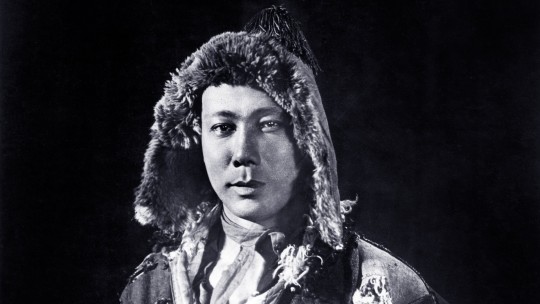
Valéry Inkijinoff in Storm Over Asia (Vsevolod Pudovkin, 1928)
Cast: Valéry Inkijinoff, I. Didintseff, Aleksandr Chistyakov, Victor Tsoppi, Fyodor Ivanov, V. Pro, Boris Barnet, Karl Gurniak, I. Inkizhinov, V. Belinskaya, Anel Sudakevich. Screenplay: Osip Brik, Ivan Novokshenov. Cinematography: Anatoli Golovnya. Art direction: M. Aronson, Sergei Kozlovsky.
The great silent Russian propaganda films depended heavily on two things the nascent Soviet Union had in abundance: faces and landscapes. This reliance on closeups and sweeping views of fields and plains sometimes resulted in a loss of narrative coherence, but put the emphasis on the people and resources that the Bolsheviks needed to exercise control over. Storm Over Asia is no exception, beginning with the windswept land and Asiatic faces of the Mongol peoples of eastern Russia, which at the time depicted in the film was still a vast battleground for the Bolsheviks and European forces. After establishing the location, the film focuses on Bair (Valéry Inkijinoff), a young hunter whose father sends him off to the bazaar to sell a silver fox pelt. In the vividly filmed bazaar, Bair is cheated by an unscrupulous European fur trader (Viktor Tsoppi), who might as well be wearing a label: bourgeois capitalist. Beaten by the henchmen for the trader, Bair escapes and joins a group of Soviet partisans fighting the occupiers. The occupation forces seem to be British, who were never a significant presence in this part of the Soviet Union, but the film is vague about such details. They manage to capture Bair, who is sent out with a soldier to be shot, but when they examine Bair's belongings they discover an ancient document indicating that he's a direct descendant of Genghis Khan. (The original title of the film, in Russian, was The Heir to Genghis Khan.) They find the wounded Bair, restore him to health, and set him up as the puppet ruler of a Mongolian state. In the end, Bair turns against the imperialists and the film concludes with a literal storm sweeping them away. It's a film full of great set-pieces, including a montage mockng the imperialists and their wives as they put on their finery and then are driven on a muddy road to meet the new Grand Lama. After an elaborate ceremony (actually filmed at a Tibetan Buddhist celebration) the lama turns out to be a small boy, not at all impressed with his visitors.
2 notes
·
View notes
Text

vsevolod-ivanov-the-grandchildren-of-perun-exodus-of-the-hyperboreans-2006
2 notes
·
View notes
Text
by Vsevolod Ivanov



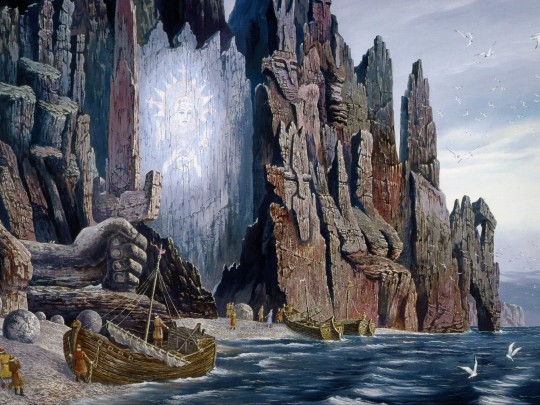

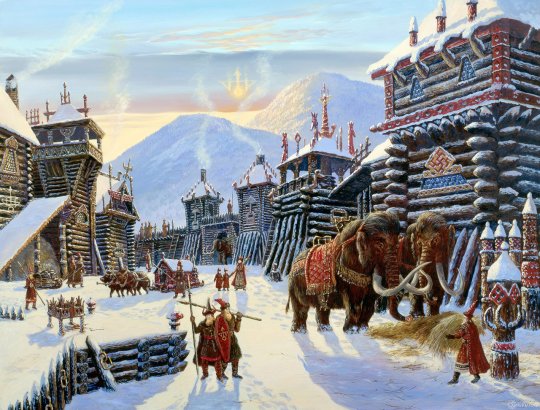

19 notes
·
View notes
Text

Senich (Kupala Night) (Vsevolod Borisovich Ivanov, 2007)
33 notes
·
View notes
Photo







Art by Vsevolod Ivanov.
53 notes
·
View notes





